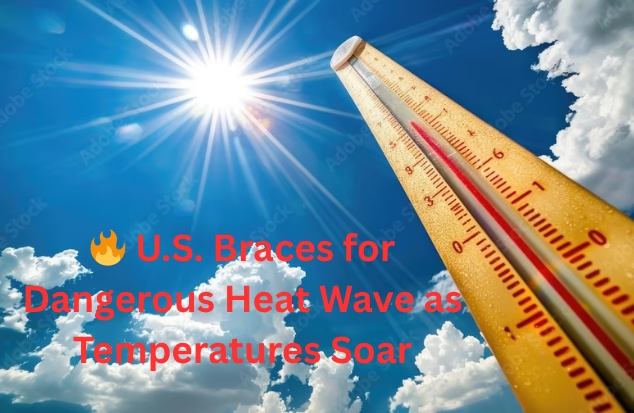A heat wave of intense heat is sweeping across large parts of the United States this week, bringing dangerously high temperatures and extreme humidity. From the Midwest to the Southern states, many communities are facing blistering heat that feels much hotter than the actual temperature. This dangerous heat wave is affecting daily life and health across various regions.

The National Weather Service issued a heat advisory until 10 p.m. in New York City, where video went viral July 14 showing passengers on a subway train watching as a station was inundated with rushing water.
What’s Causing This Heat Surge?
The culprit behind this scorching weather is a weather pattern known as a heat dome—a strong area of high pressure that traps hot air near the surface. With little cloud cover or wind to offer relief, the sun beats down relentlessly, creating a “pressure cooker” atmosphere.
To make matters worse, rising moisture levels from crops like corn in the central U.S. are adding to the humidity. This effect, often described as “corn sweat,” intensifies the discomfort, making it feel even hotter than it already is.
Regions Most Affected
Several states including parts of the Midwest, South, and Gulf Coast are under official heat advisories. In some areas, the heat index—a measure that combines temperature and humidity—has surged past 110°F. Residents are being warned to limit outdoor activity, especially during the afternoon when conditions are most severe.
Cities like Houston, Atlanta, and Chicago are seeing prolonged periods of intense heat. In many places, overnight lows are staying unusually high, offering little relief even after sunset.
Health Risks on the Rise
Authorities are urging the public to take this heat wave seriously. Prolonged exposure to such extreme temperatures can lead to heat exhaustion, dehydration, and in severe cases, heat stroke. Vulnerable groups—including the elderly, young children, and outdoor workers—are particularly at risk.
Cooling centers have been opened in some communities to provide safe, air-conditioned spaces for those without access to relief at home. Officials are also encouraging people to check on neighbors and loved ones, especially those living alone or without proper cooling systems.
A Broader Warning
While heat waves are a part of summer, scientists warn that extreme heat events like this one are becoming more frequent and intense. Changing climate patterns are contributing to longer and hotter summers, with serious implications for public health, agriculture, and energy systems.
How to Stay Safe

As this intense weather continues, it’s important to take precautions:
-
Stay hydrated by drinking plenty of water throughout the day
-
Avoid strenuous outdoor activities during the hottest hours
-
Seek shade or air-conditioned spaces whenever possible
-
Wear light, breathable clothing
-
Check on at-risk individuals, such as seniors and small children
🌡️ Final Word
This heat wave is more than just uncomfortable—it’s a serious health hazard. With temperatures soaring and humidity levels rising, staying cool and informed is critical. Take the warnings seriously, and protect yourself and others from the searing heat.



